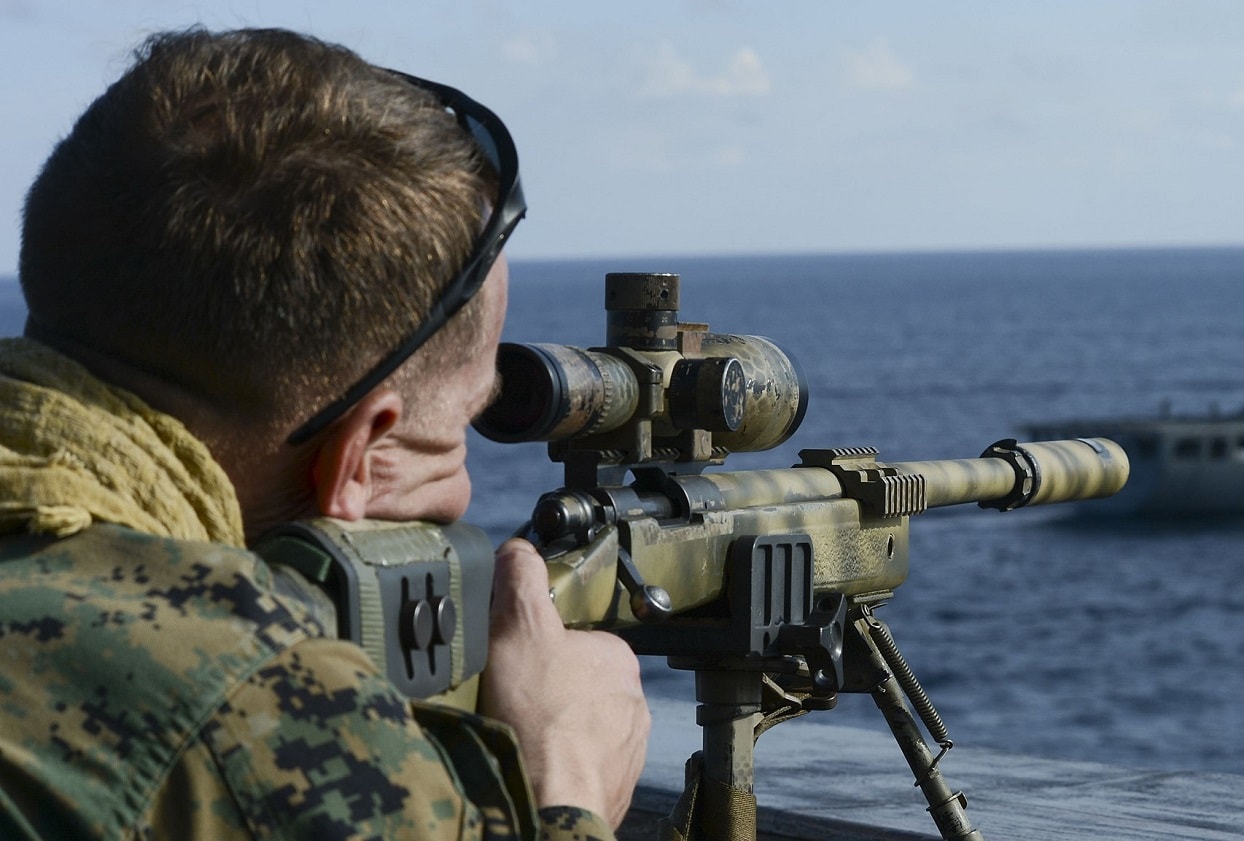The original M40 sniper rifle has been in use since the Vietnam War and has been the Marine Corps’ go-to weapon for decades. But it has its critics, and the Marine Corps began phasing it out in 2018. Although proponents love its feel and action, many marines complain that it doesn’t have sufficient range and power. But since it has been in use for over 50 years, and is getting replaced, it deserves a deeper dive and analysis.
M40 Sniper Rifle: A History
During the Vietnam War, the Marines adopted a commercial-off-the-shelf rifle for military use. The civilian Remington Model 40X bolt-action (based on the Remington Model 700) was used as a varmint rifle at the time. A varmint rifle is a “plinker” that kills troublesome animals such as groundhogs or coyotes at long ranges. The marines gave it a better scope, called it the M40, and assigned it to marine scout-snipers in 1966.
M40 Round Not Doing the Job for Snipers
It served admirably in every U.S. conflict since Vietnam. It was upgraded over the years several times and the version in service now is the M40A5. Most complaints focus on the caliber of the bullet – a .308 Winchester (7.62mmx51mm NATO round). The .308 bullet is popular with deer hunters, but even civilian hunters like a more powerful round for big game such as the .300 Winchester Magnum. The marines were beginning to wonder why their elite snipers still had to use the .308 while civilians could use the .300 WinMag. The M40A5’s maximum effective range is only 1,000 yards, while the .300 WinMag is good out to 1,300 yards. Moreover, the .308 round loses its power after 700 yards. Snipers and their spotters have to do a rapid calculations because the .308 drops short of its target and it needs significant wind correction.
The Enemy Strikes Back
Marine scout snipers had another problem in Iraq and Afghanistan. The enemy created a tactic that was a disadvantage to marine sniper teams. Enemy machine guns had a greater range than the M40A5. Say a marine sniper eliminated a target. Since the team was usually only 1,000 yards away, the enemy simply pointed their machine guns at the sniper’s position. This pinned down the team forcing it to eventually call in artillery fire to escape the position.
M240A5 Gets Replaced With Needed Changes
To alleviate this problem, the marines knew they needed an upgrade, and by 2018, the M240A5 was being replaced. The marines looked no further than the Navy SEALs and Marine Special Operators (MARSOC), who swore by the Mark 13 Mod 7 bolt-action sniper rifle. This has better range and a more powerful bullet, plus a reticle to account for bullet drop and wind. And guess what? The Mark 13 fires the .300 Winchester Magnum cartridge described above. The Mark 13 is expensive though – it costs around $12,000.
The M40A5 is still used in training for the marines, and it is very reliable with a nice feel. But it was probably frustrating for the marine snipers to have a rifle without ample range and power for decades. Now they are able to reach out and touch someone at a longer distance – safely away from most enemy fire.
1945’s new Defense and National Security Editor, Brent M. Eastwood, PhD, is the author of Humans, Machines, and Data: Future Trends in Warfare. He is an Emerging Threats expert and former U.S. Army Infantry officer.

